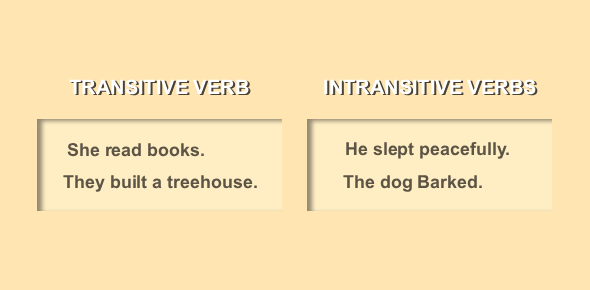Transitive Verbs: Definition, Sentence Structure, and Key Examples
Lesson Overview
Verbs bring sentences to life, but some verbs do more than simply describe an action. They also reveal who or what is on the receiving end of that action. These are known as transitive verbs. Understanding transitive verbs is key to building strong, grammatically correct sentences. They help us clearly express who is doing what to whom or what.
What Are Transitive Verbs?
Transitive verbs are action verbs that express an action directed toward a person, place, or thing. The action passes from the subject to the object. This object, called the direct object, is necessary to complete the meaning of the verb.
Example: The chef baked a cake.
- "Baked" is the action verb.
- "The chef" is performing the action (the subject).
- "A cake" is the direct object – it's what is being baked.
Without the direct object ("a cake"), the sentence "The chef baked" feels incomplete. We're left wondering, "Baked what?"
Transitive vs. Intransitive Verbs
Understanding the difference between these two types is crucial for constructing clear and grammatically correct sentences.
Transitive Verbs
Transitive verbs are action verbs that express an action directed toward a person, place, or thing. This "receiver" of the action is called the direct object. The direct object is essential to complete the meaning of the verb.
Example:
- The cat chased the mouse.
- Verb: chased
- Direct Object: the mouse
The verb "chased" needs the direct object "the mouse" to make sense. The action of chasing is directed towards the mouse.
Intransitive Verbs
Intransitive verbs, on the other hand, do not require a direct object to complete their meaning. They express actions that are not directed towards something or someone in particular.
Example:
- The dog barked.
Verb: barked
The verb "barked" stands alone. It doesn't need an object to receive the action.
Take the Quiz :
How to Form Sentences with Transitive Verbs
Constructing sentences with transitive verbs involves understanding their relationship with the subject and the direct object.
1. Identify the Subject:
The subject is the noun or pronoun that performs the action of the verb. It usually comes before the verb in a sentence.
Example:
- The chef baked a cake.
2. Choose the Transitive Verb:
Select a verb that expresses an action directed towards a person, place, or thing.
Example:
- The chef baked a cake.
3. Identify the Direct Object:
The direct object is the noun or pronoun that receives the action of the verb. To find the direct object, ask "What?" or "Whom?" after the verb.
Example:
- The chef baked a cake. (Baked what? A cake.)
4. Construct the Sentence:
The basic sentence structure with a transitive verb is:
Subject + Verb + Direct Object
Example:
- The chef baked a cake.
Expanding Sentences with Transitive Verbs:
You can add more details to your sentences by including adjectives, adverbs, and prepositional phrases.
Examples:
- The talented chef baked a delicious cake. (Adjective)
- The artist carefully painted a beautiful portrait. (Adverb)
- The musician played the guitar with passion. (Prepositional phrase)
Examples of Transitive Verbs
Explore some transitive verb examples across different contexts:
1. Everyday Actions:
- Eat: The children ate their lunch.
- Drink: She drank a glass of water.
- Read: He read a book.
- Write: The student wrote an essay.
- Wear: They wore warm coats.
2. Creative Activities:
- Paint: The artist painted a mural.
- Draw: She drew a picture of her dog.
- Build: The construction workers built a house.
- Compose: The musician composed a new song.
- Design: The architect designed a skyscraper.
3. Communication and Interaction:
- Tell: He told a funny story.
- Ask: She asked a question.
- Answer: The teacher answered the student's question.
- Call: I called my friend on the phone.
- Send: They sent an email.
4. Thoughts and Emotions:
- Love: She loves her family.
- Hate: He hates broccoli.
- Believe: They believe in justice.
- Remember: I remember my childhood.
- Forget: He forgot his keys.
5. Physical Actions:
- Kick: The player kicked the ball.
- Throw: She threw the frisbee.
- Catch: He caught the ball.
- Carry: They carried the heavy boxes.
- Push: He pushed the door open.
Rate this lesson:
 Back to top
Back to top
